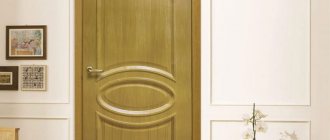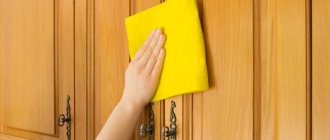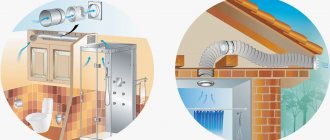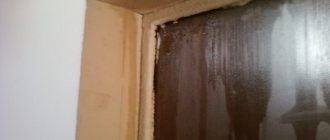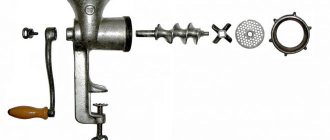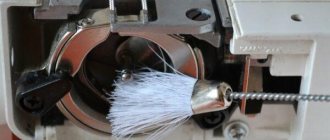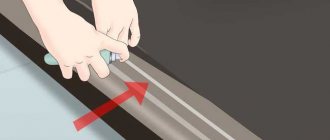The best lubricants against squeaking hinges
In fact, in most cases these problems can be solved quite simply. As a rule, the fact that a door creaks is a consequence of the friction of the door hinge elements against each other. These elements need to be lubricated. There are several popular and effective means for this:
- machine oil;
- diesel oil;
- spindle oil;
- cyatim;
- grease;
- various silicone lubricants and aerosols;
- special compositions for lubrication.
It is clear that the substances and materials listed above are unlikely to be at hand in an apartment or house at the right time. You will have to go to specialized stores for them.
Meanwhile, there are alternative means that can almost certainly be found in any home:
- vegetable oil;
- candle paraffin;
- graphite shavings of a soft pencil.
However, these simple “folk” remedies still cannot compare in their effect with, say, machine or diesel oil.
Special mention should be made about vegetable oil. After lubricating the hinges with this oil, the door structure will most likely begin to make sounds again after a few days. In addition, abundant and frequent use of sunflower oil causes corrosion. This means that instead of the old creaking, an even more unpleasant grinding noise may appear. That is, vegetable oil is quite suitable for achieving short-term results, but in order to achieve a long-term victory, you still need to use something more serious.
Eliminating the creaking of the front door
A wooden door, which is installed on the landing and leads to the apartment, will always be subject to temperature changes. Such differences can undoubtedly cause the door to squeak.
The difference in temperature inside the apartment and outside is approximately ten degrees, this is especially noticeable in the off-season. It is not possible to eliminate the cause, but you can influence the consequences. In this situation, graphite powder or an ordinary pencil will help.
If the front door was installed recently, and creaking has already appeared, then the reason is that the hinges do not fit tightly to the jamb. Prepare a screwdriver, matches and glue and perform the following operations:
- Try tightening the screws in the hinge more tightly using a screwdriver;
- If the first option does not help, glue several matches together or take a ready-made chopstick and insert it into the hole, then fix it.
It happens that the hinges of the front door squeak due to rust. To eliminate these problems, use molten paraffin.
Method to eliminate door squeaking on frame by flooding hinges
What is the best way to lubricate hinges?
The procedure for lubricating the hinges must be carried out very carefully and carefully. There is a very serious risk of getting your fingers pinched. It is better not to touch or do anything with your bare hands. Solid oil can be applied with a wooden stick. It’s better to simply pour machine oil into the problem area, into the hinge gaps, using a syringe. By the way, machine oil can also be used to combat rust.
Advice
In order to carry out the lubrication as efficiently as possible and to be able to thoroughly rinse the hinges, it would not be superfluous to remove the door that is creaking from its place, and then, of course, put it back.
Of course, any lubricant can wear out its service life over time. This means that the door - no matter whether it is an entrance or an interior door - will again begin to open with a creak. But there is nothing to worry about here: you just need to repeat the proven procedure.
We recommend: Rules for caring for leather furniture, features of cleaning products at home
Instructions: how to lubricate the hinges of an iron door
A creaking iron or metal door needs to be lubricated. If the parts of the door structure are non-removable, then this will have to be done without removing the structure.
A metal door is lubricated as follows:
- The door leaf opens wide;
- Then it rises a little (for these purposes, you need to put something under the end of the door, for example a thick file);
- After that, old grease and accumulated dirt are removed from the fittings;
- Then you can apply a lubricant using a cotton swab, brush, syringe or using an oil can with a nozzle;
- After completing all the procedures, the door is removed from the “lever” and moved several times in different directions so that the product is evenly distributed over the hinges;
- Excess substance must be removed with a dry cloth.
Before lubricating the hinges of iron doors, they must be thoroughly cleaned of debris and old grease.
Applying grease with your fingers is not recommended for safety reasons. The door may accidentally slam shut and cause injury. However, you can additionally insert a wedge into the opening - this will prevent the door from closing.
During lubrication, more substance should be applied to the upper hinges, since the main load during operation of the door falls on them.
If the hinges are a hidden mechanism, then you need to find all its rotating parts and lubricate them. Sometimes there are special holes for filling oil.
How to deal with creaking metal doors?
Modern doors are made from different materials, and this matters in this matter.
For metal doors, of course, machine oil and other specified compounds will also be effective, but only if the metal product creaks due to friction of the hinge components.
However, an annoying sound may also be a consequence of the fact that the awnings were installed incorrectly when installing the door. In this case, especially if the structure is an entrance one, there is only one option - contact a professional installer. It is unlikely that you will be able to fix everything on your own, without special knowledge and skills.
The main causes of squeaking hinges
The appearance of unpleasant sounds when opening the sash is observed after installing the partition or after a long period of operation. The main causes of squeaking:
- incorrect technology for installing the canvas;
- low quality fastenings;
- lack of bearings in the hinges;
- loose fit of fasteners to the canvas;
- the appearance of rust;
- ingress of building materials into the internal mechanism during installation;
- drying out of the lubricant for the hinges when opened regularly due to continuous friction of moving fasteners;
- wear of fixing parts;
- deformation, sagging of the door;
- the gap between the hinges and the sash jamb;
- the size of the door trim exceeds the size of the door leaf.
The reasons for squeaking are incorrect installation technology during installation and wear of the fasteners. Failure to eliminate the cause in a timely manner leads to deformation of the sash and moving elements.
Is your wooden door creaking? This can be fixed too!
Doors made of wood can also creak, for example the door of an old cabinet. Wood has one significant feature: it swells over time or from frequent contact. And this, when opening the cabinet, leads to friction between the end and the door frame. As a result, a characteristic creak appears. You can get rid of it using a tool such as a plane.
It is also worth adding that economy-class wooden door structures are especially often plagued by problems with creaking.
Eliminating squeaking in plastic sheets
What to do if a plastic balcony door creaks? Let's find out the cause of the creaking, we already know how to do this.
What can cause it to squeak:
- Sagging and clinging to the threshold, this is due to the fact that the hinges have aged over time and deteriorated;
- Offset, it catches the frame. The fittings need to be adjusted.
- Makes a heart-rending sound when opening, the fittings need to be adjusted.
To eliminate these causes of squeaking, sagging and misalignment. For this work, you will need a marker that can be washed off with water and, when closed, outline the door structure. We compare these lines with the frame; when the doors are in good condition, the lines are parallel. If there is sagging, then adjust the upper hinge mechanism.
To perform these actions, the canvas is opened wide and fixed so that it does not close, and the decorative fittings are removed. The key is inserted into the screw we need for adjustment, and we turn it clockwise several times. This will help lift the sagging edge by pulling the door structure towards the jamb, thereby eliminating creaking.
If after performing these works the creaking does not disappear, then we will work on the mechanism of the bottom panel. Its difference from the top one is that it has 2 screws. The screw located on the top end lifts the door, and the one located on the side regulates its position.
Getting rid of the creaking of a plastic door
Doors in rooms today may well be made of plastic. This material is especially often used to make doors that lead from the room to the balcony. This is due to the fact that now, in principle, plastic decoration on the balcony is fashionable.
And now a problem arises: does the plastic door squeak? What to do and what to do? In general, all the tools discussed in this article are relevant. However, there are opinions that some oils (spindle, machine, diesel) destroy plastic, and therefore it is better to choose, for example, silicone grease.
Note that any plastic door is actually quite heavy, so creaking can occur due to a phenomenon such as sagging. To eliminate this drawback, adjustment of the top hinge is necessary. And to do this you will have to remove the decorative fittings. The same will need to be done if the bottom loop is problematic. Of course, it is better if these operations are carried out by a professional and specialist.
Advice
If, despite all the efforts and methods, the creaking has not disappeared, it means that the fittings have simply served their purpose and need to be replaced with a new one.
How to fix a door squeak
Let us dwell in detail on eliminating the above-mentioned causes of door creaking.
Normalization of humidity levels
If an unpleasant sound appears and disappears, it is most likely due to the swelling of the wooden panel or box from moisture. This problem may be seasonal, becoming more active with the onset of autumn rains or spring melting of snow. To eliminate it, it is necessary to take the necessary measures to normalize the microclimate inside the home, minimizing its dependence on external atmospheric factors as much as possible.
One of the reasons for a door creaking may be excessive or insufficient humidity in the room.
If there are still old window units in the house, it is advisable to replace them with modern systems that can provide the required tightness when closing. Effective ventilation will be required to remove excess moisture from the home. It often happens that built-in ventilation systems become clogged or lose their efficiency: in addition to cleaning, installing forced air exhaust fans helps a lot.
Use of moisture-proof impregnations
If a wooden door is installed in a kitchen or bathroom, it can swell and squeak even with the most effective ventilation. It's all about significant jumps in humidity in these rooms. To reliably protect the door from swelling in this case, it is thoroughly impregnated with special hydrophobic liquids (stains).
Water-based water-repellent stain
Ideally, rooms with high humidity levels are recommended to be equipped with doors made of plastic or glass .
Eliminate friction between box and canvas
If normalizing the humidity of the room does not bring the desired effect, and the door continues to touch the frame and squeak, you will need to remove a small layer of material at the point of contact of the two surfaces. The method for determining the area of contact between the canvas and the box was described above.
The difficulty of fixing the problem directly depends on the extent of the friction point, but in any case, this will require some carpentry skills:
- A small area of friction can be eliminated with an ordinary sharp knife, using it to trim the loot itself. The place from which the layer of material will be removed is then sanded and tinted to match the overall tone of the product.
Undercut the door leaf
- To remove larger areas of friction, you will have to use a hacksaw, rasp and hand (or electric) plane. In any case, regardless of the tool chosen, it is better to dismantle the door and remove excess material at the end of the leaf, and not at the frame. This is done for the reason that in this case it is much more convenient to disguise the repair site. For example, if trimming is carried out along the lower end, such an area does not even need to be tinted.
He filed the door along the frame
- For large friction bands (from 50 cm), you can try adjusting the hinges. To do this, the canvas is dismantled and the canopies are removed. If the friction point is at the top, then the bottom loop is usually replaced with a piece of paper until the creaking is eliminated. In the case of lower friction, the same procedure is carried out with the upper shed. If the problem does not go away after this, then it is necessary to plant the hinges deeper, removing a small layer of material under them.
Tightening the hinge fastening
The cause of a door creaking can be “loose” hinges when their fixation to the surface of the frame or leaf is weakened. This malfunction is diagnosed using the above-mentioned lever when the raised door stops creaking. The procedure for complete restoration of seats is quite labor-intensive, so other methods of strengthening the fastening density are usually used. The easiest option is to replace the old screws with new ones, but of a larger diameter. You can also caulk old holes with wooden liners or seal them with putty, drilling new holes nearby.
Tightening door hinges
Reinstalling door hinges
There are reasons for squeaking doors that cannot be eliminated with a little effort. We are talking primarily about situations where mistakes were made during the installation of the door block and the insertion of hinges. In such cases, you have to remove the box and redo everything.
When reinstalling the hinges in a new way, you must first decide which surface to start with. If the canvas and the box are without knots, then there is not much difference; but if there are knots on a solid wood door, then you need to start there. Having decided on the most convenient places to reinstall the hinges, you need to see how they will be projected onto the box. It is desirable that there be 15-25 cm from the edge of the fabric to the beginning of the loop.
When applying the awnings along the marking, it is important to ensure that the hinges extend to the front surface (the side where the door opens). The hinge is applied and outlined with a pencil, while its edge should be flush with the door cut.
At the next stage, the old seat for the hinge is expanded, if necessary. A chisel or electric plane is suitable for these purposes.
The central screw is screwed in first, so the place for its landing is marked with an awl or felt-tip pen.
If done correctly, the embedded hinge will have one level of fit.
If necessary, the landing area can be deepened. Incorrect hinge seating level can also cause squeaking. Its protrusion above the surface will lead to the appearance of a significant gap from the door to the frame on the side of the inset. On the reverse side, the opposite effect will be observed, and a very small distance will cause friction. If the hinge is planted very deeply, the door will be pressed against the frame and additional stress will be placed on the hinges. To eliminate the first defect, the loop is removed and the seat is deepened. If the cause of the squeak is that the planting is too deep, you can place thick cardboard under the canopy.
To mark the installation location of the awnings on the door frame, you need to insert a sheet into it so that there is a gap of 2-3 mm on top. Next, use a pencil to indicate the level of the upper and lower limits of the seat. To attach the hinges, they are initially applied to mark the mounting holes, which are drilled with a thin drill. You can screw in the screws with a screwdriver or screwdriver. Reinstallation of hinges is also carried out in case of their operational wear, due to which the door leaf and frame begin to touch.
More details about this method can be seen in the video:
Causes
It is important to take into account not only the condition of the door structure, but also its purpose. The reasons for unpleasant sounds will differ dramatically when comparing entrance and interior doors. The opening/closing mechanism, the presence of decorative and auxiliary elements are also taken into account. Even the method of fastening and fittings play an important role. Therefore, all points must be taken into account. The following analysis will allow you to determine not only the causes of the problem, but will also help you choose the best way to lubricate the door so that it no longer creaks.
Causes of squeaking
You need to get rid of extraneous sounds as soon as possible, before the creaking drives you crazy. It’s not difficult to understand what to do to prevent the door from squeaking, but first you need to figure out why the problem arose. Experts highlight the following reasons:
- poor installation;
- lack of lubrication;
- no balls;
- high humidity;
- poor lining;
- faulty elements;
- unreliable fastening of hinges;
- poor blade adjustment.
The easiest way to get rid of squeaking is to lubricate the door. To do this you need to choose the right materials.
The door creaks: reasons
The door is attached to the door frame using hinges. Factory lubricant is applied to the door hinges, which guarantees their silent operation.
• Drying of the awning lubricant during use may cause the door hinges to begin to creak.
• Wear and tear on the hinges during use can also cause an annoying sound.
Place a pry bar under the door and lift the door slightly; if the structure stops creaking, then the problem is in the hinges.
• Changes in air humidity. The creaking may appear and disappear - this happens in cases where the door is made of solid wood and is affected by fluctuations in air humidity in the room.
• Friction between the door frame and the leaf. The reason is a change in the geometry of the structure. For example, this effect can occur when a new house subsides.
• Making mistakes during door installation . It is not enough to have instructions and only general basic knowledge to install the door correctly. Errors and incorrect movements lead to the fact that the door eventually begins to creak terribly.
• Seals that are too hard can cause squeaking.
• Construction debris at the bottom of the door frame. If the front door of a house or apartment creaks and at the same time opens and closes with difficulty, then it is worth checking the inside of the box for debris.


